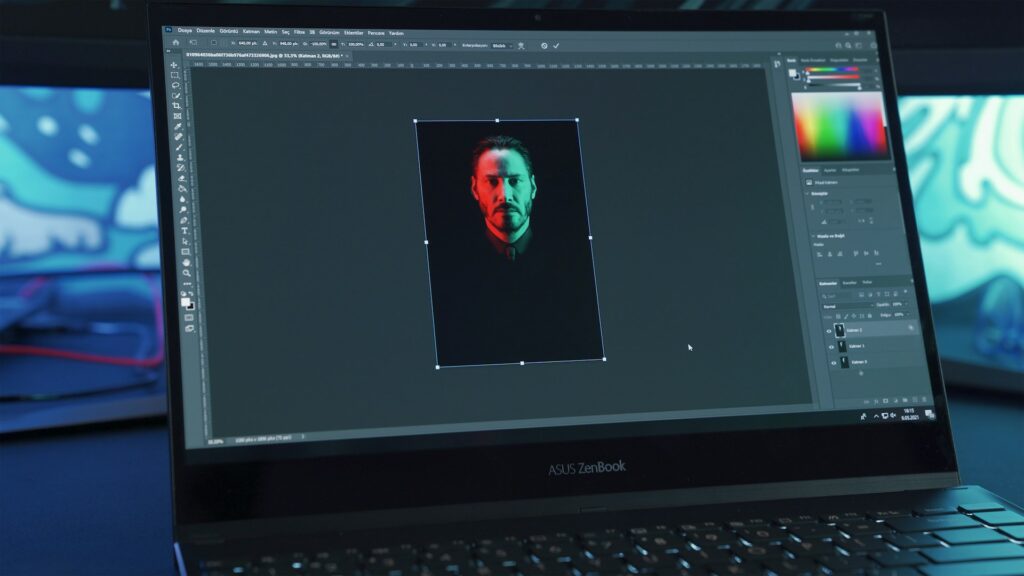The key to non-destructive editing is found in the use of smart objects.

The key to non-destructive editing is found in the use of smart objects.
Photoshop is a program that places a premium on both flexibility and accuracy. If you want to be able to make bold creative decisions without having to worry about destroying your original file, you want to have flexibility. The Smart Objects are a solution to this problem. Smart Objects are the foundation of non-destructive editing, and novices sometimes fail to see their importance. They provide you with the power to modify, resize, filter, and experiment without sacrificing the quality of your finished product.
What Exactly Are These “Smart Objects”?
Layers that are known as Smart Objects are those that maintain the original data of a picture or its contents. Photoshop keeps the original file inside the Smart Object, which protects it against alterations that are irreversible. This is in contrast to the traditional method of making adjustments directly to pixels. At every point in your workflow, you will always have the ability to revert, modify, or undo any adjustments that you have made.
Where Can I Find Smart Objects?
One of the most powerful aspects of Smart Objects is their adaptability. With these, you are able to:
- It is possible to resize an item numerous times without causing it to become blurry or pixelated. Scale without losing quality.
- Changing filters in a non-destructive manner — Use Smart Filters, which can be modified or deleted at any moment, from your application.
- When doing experiments, it is important to maintain the original picture by storing a secure replica inside the Smart Object.
- Collaborate on a number of different projects and link Smart Objects so that any modifications made to the initial version are reflected elsewhere.
Creating Intelligent Objects by Converting Layers
Just one second is all that is required to transform a layer into a Smart Object:
- Apply a right-click on the layer.
- Pick the option to Convert to Smart Object.
- Find the icon that represents the Smart Object in the thumbnail of the layer.
- After conversion, any alteration that you apply will retain its flexibility.
Using Intelligent Filters
The availability of Smart Filters is among the most advantageous characteristics of Smart Objects. Instead of adding a filter in a permanent manner, Photoshop gives you the ability to:
- You may apply filters to a layer of a Smart Object.
- The filter parameters may be adjusted at any time.
- The filters may be turned on and off.
- In order to get creative effects, selectively mask filters.
This makes it simple to explore; you can try out a variety of various appearances without having to start from scratch.
Smart objects that may be resized and transformed if necessary
It is possible to cause pixelation and distortion in a picture if you continuously resize it without using Smart Objects. However, with them:
- You are able to scale up or down without experiencing any loss in quality.
- Objects may be rotated, warped, or skewwened while maintaining their original crispness.
- Consolidate transformations without causing any damage to the pixels that are below.
- Mockups, product designs, and digital collages are all examples of projects that might benefit greatly from this innovation.
Smart Objects That Are Embedded versus Linked
Smart Objects in Photoshop may be divided into two categories:
- Stored inside the Photoshop file itself are what are known as embedded smart objects. Superb in terms of mobility.
- Connected Intelligent Objects – An external file should be referenced. Any changes made to the primary file will be reflected automatically in any projects that are connected to it.
- In situations when you are working on huge projects or collaborating with a team, this is very helpful.
When it comes to creative projects, smart objects
Smart Objects excel in processes that are based on the actual world, such as:
- A mockup is a When you change a logo or design that is included inside a Smart Object, it will immediately update throughout your mockup.
- Combine numerous photographs while maintaining the ability to alter each layer using the Photo Manipulations feature.
- For the purpose of maintaining consistency across several files, design templates allow you to reuse the same Smart Object.
- Keeping your modifications reversible is essential for achieving maximum control when using non-destructive retouching.
Constraints That Should Be Considered
The Smart Objects are not without flaws, despite their strength. The process of rasterizing, which eliminates the non-destructive flexibility of the Smart Object, is required in order to make some alterations, such as painting directly on the Smart Object. It is also possible for them to increase the size of the file, particularly if you are embedding huge things.
In Photoshop, Smart Objects are more than simply a convenient tool; they are the key to a workflow that is both professional and non-destructive. You are able to explore without the risk of losing your original work when you use them for filters, scaling, and sophisticated adjustments. This gives you the flexibility to experiment. As soon as you begin using Smart Objects in your projects, you will begin to question how you ever managed to manage your work without them.







